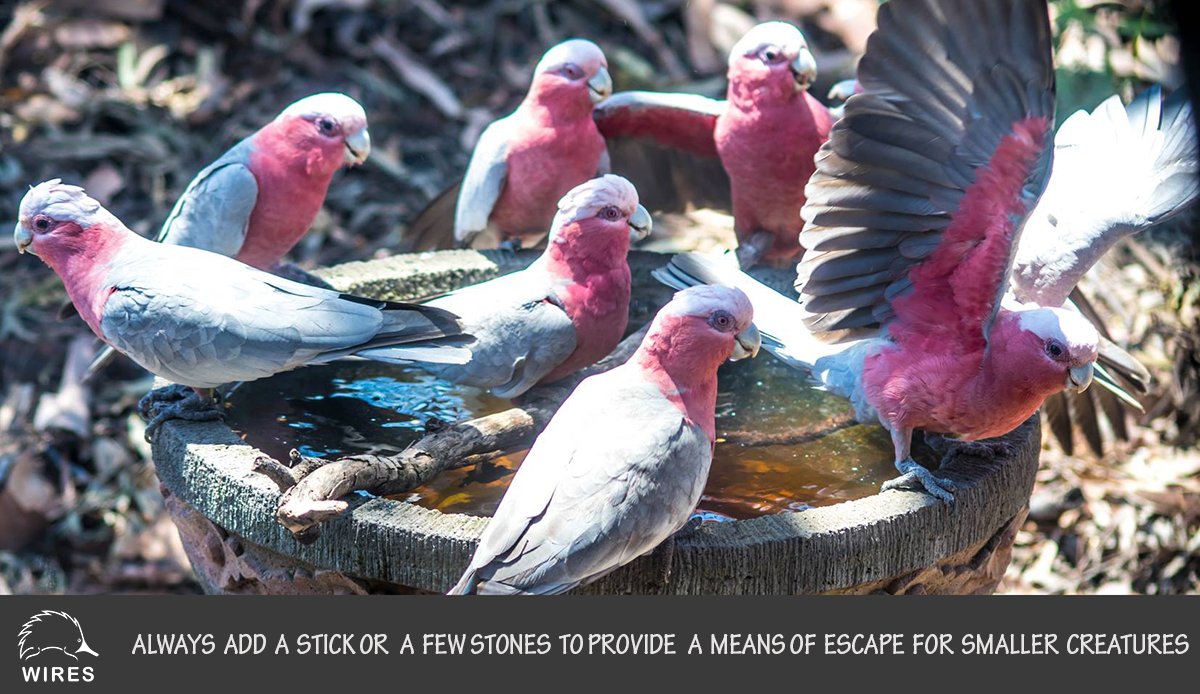Putting Water out for Wildlife can Help Save Lives

- Provide containers of water around your yard, ideally in the shade. Remember to keep the containers clean, refresh with cooler water frequently and be sure to change the water daily.
- Containers of different depths can help provide water for a range of different birds and animals. If you can place containers at different heights and locations this is also a great help.
- Containers placed under some bush or tree cover provide both shade and assist birds to be better placed to escape from predators.
- Please always place sticks or a stone in the containers to act as a ramp for exhausted smaller animals a way out if they fall in.
- If you have found an animal in distress the ideal scenario is to offer it water in a shallow dish and allow the animal to approach and lap itself. For koalas, if they are too weak to approach a container themselves you can syringe small amounts of water slowly into the side of the mouth using a 3ml syringe, while its head is in the normal position, not tipped back. Do not ever force an animal to drink. Emergency firefighters who come across animals in distress will usually have to make an on the spot decision and will have no other option or source of water other than their personal water bottle. In these cases holding the bottle in front of and below (not above) the koala's mouth and letting water gently dribble from the bottle so that the koala can lick at the mouth of the bottle is the best option.
- You can also place some containers around the perimeter of your property on the fence line to provide water for reptiles. This has the added advantage of deterring reptiles from approaching houses to access water from taps and other sources closer to your house.
- Keeping your cats and dogs indoors helps wildlife that may be vulnerable to predators while in a weakened state.
- On hot days provide shade with a garden umbrella or other cover over distressed animals if you find one and it is not safe to touch or move it while waiting for a rescuer to arrive.
- Gently mist distressed animals with a very light spray of water or place a sprinkler nearby if possible.
- Check pools and skimmer boxes twice a day for wildlife that may have fallen in and provide a tethered rope or platform as a means of escape.
Newsletter
Stay in touch with our regular rescue stories and WIRES updates.

